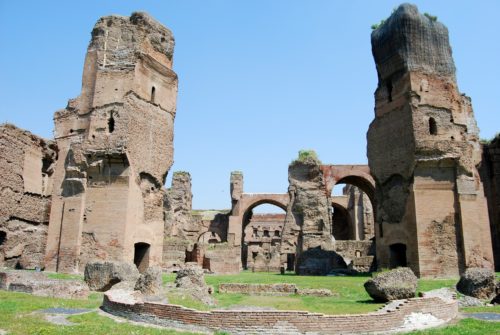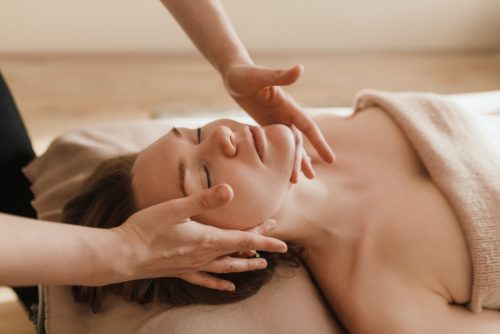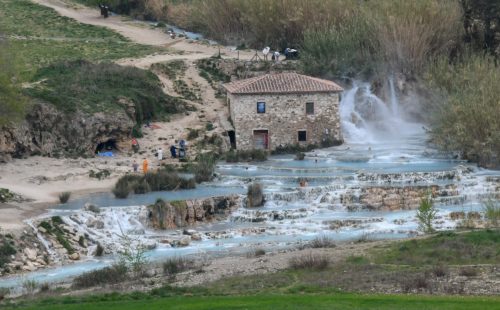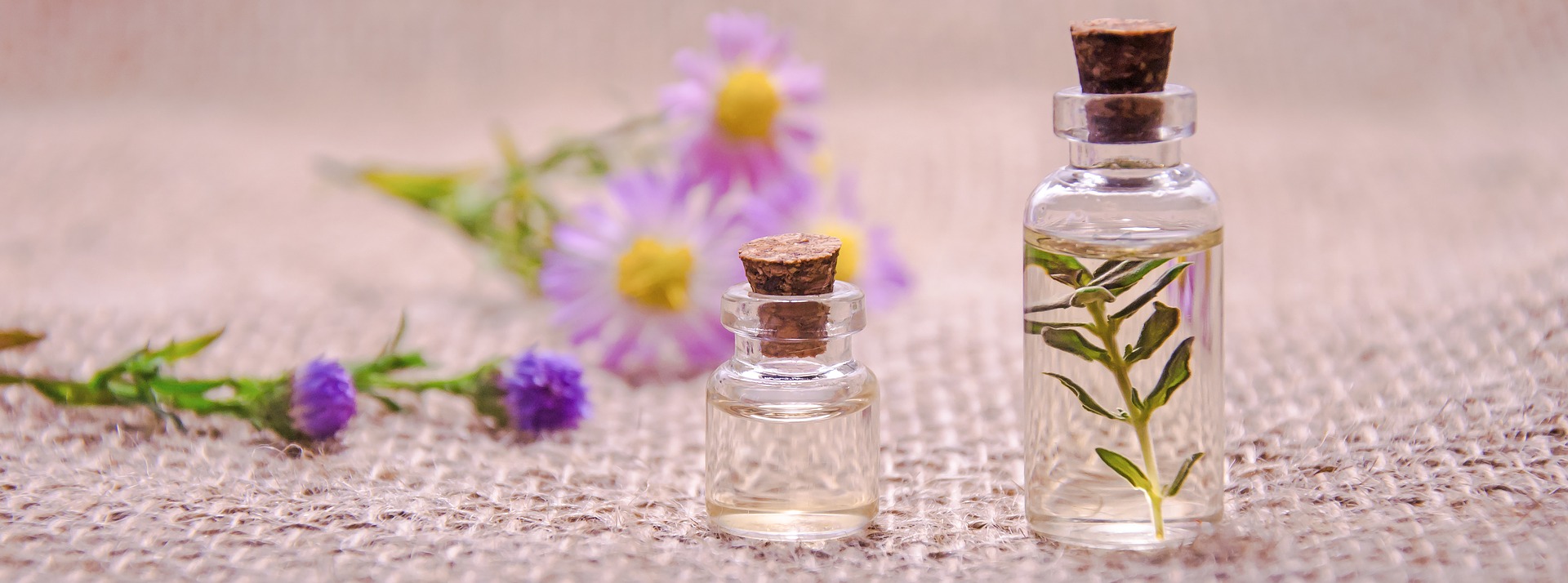Italian spas and wellness centres have reopened, but do not forget that Italy is also rich in natural terme
Spas and health resorts have become synonymous with tourism and are increasingly attended by a public other than the traditional one. Luxury resorts and stunning landscapes often team up with the beneficial effects of thermal waters, attracting a diversified audience. Therefore, these places are visited both by people who need specific medical treatment and those who want to feel pampered for a few days (or hours).
Now that Italian wellness facilities, from spas to fitness centres, have opened their doors again, we will tell you some secrets to make the most of your stay – in any season! – without overspending.
Spas and Italy: a long story (made short)

Terme di Caracalla, Rome
Spas have been part of Italy’s natural heritage for millennia. Thanks to its particular geology, Italy is rich in extraordinary waters known for their therapeutical effects since very ancient times. The Etruscans considered hot springs as sacred waters that helped regain wellness and health; the ancient Romans built thermal complexes to take care of their body and mind, and to nurture important relationships.
From Roman baths…
The first terme pubbliche, inspired by the Greek gymnasium and the Egyptian steam bath, were built in Rome in 25 BC thanks to Agrippa, but smaller public baths had been quite popular even before. The majestic spa complexes we can still admire were built during the Roman Empire. They were recreational centres equipped with gyms, small theatres, inns and restaurants, libraries, meeting rooms and lounges for parties. Social, cultural and commercial exchanges took place there; the porticoes housed stores of all kinds and the facilities were embellished with gardens and promenades. Public structures were open to anyone, regardless of their social class, but there were also more exclusive “clubs”, which, however, never achieved either the social or cultural importance of public baths.
…to modern baths
In the Middle Ages, the practice of bathing for hygienic purposes tended to disappear, while its ancient social and hedonistic value was cancelled. Special waters were praised for their therapeutic effects, although they were largely based on popular beliefs. The Renaissance marked a further rise in the popularity of water-based treatments, but there was no substantial progress in knowledge. During the 18th and 19th centuries, the advent of modern chemistry and the first analyses of mineral waters led to a turning point. Spas regained their ancient prestige as places dedicated to health, cultural and social improvement. As a result, they were also enriched with sumptuous gardens, spectacular meeting places and luxurious hotels.
Wellness centres today: guidelines for guests

Massages can be given with or without gloves
If you are planning to visit a wellness center, remember to always wear a face mask in common indoor areas and that your temperature must be lower than 37.5°C. Personal towels are required but don’t worry, facilities will provide you with everything you need. Single-use sheets are recommended for all personal treatments; surfaces and any non-single-use objects must be sanitized after every use. Massages can be given without gloves provided that staff wash and disinfect their hands and forearms before and after contact with each guest. While you can take a sauna, keeping an interpersonal distance of at least 2 metres, Turkish baths are still closed. As for thermal pools, the recommended density is 7 square metres of water surface per person where swimming is allowed and 4 square meters when it isn’t. As guests are required to keep their distances also in outdoor leisure areas such as solariums and gardens, the minimum area for each beach umbrella is 10 square metres.
For further information visit the website of Confcommercio.
Free hot springs in Italy

Cascate del Mulino, Saturnia
Spas and wellness centres are the jewel in the crown of the Italian hospitality system, but there are still many hot springs free to the public, an authentic treat for those lucky enough to discover them. The ideal place to pamper yourself, relax and enjoy a beautiful view at any time of year. You can find natural hot springs throughout Italy, from North to South, islands included; here are just a few suggestions.
Bormio
In Valtellina, Lombardy’s mountainous area, there are thermal springs known since pre-Roman times. The mineral waters of Bormio flow at a temperature between 37° and 43°C depending on the season. Enjoy the warm waters surrounded by the magnificent Alpine scenery. Fun fact: in the Middle Ages, the waters of Bormio, were used to wash sheep, not people.
Saturnia
Italy’s best-known hot springs can be found in Saturnia, Tuscany, not too far from Siena. The Roman legend says that they were created by Saturn, hence the name of the town. Rich in minerals and high in sulphur, the waters are fairly consistent at a pleasant 37°C. This temperature helps ease aches, while sulphur, carbon and calcium are beneficial for skin conditions. Available and beautiful all year round, the warm temperature will be doubtlessly appreciated in winter.
Ischia
One of the most beautiful islands in Southern Italy, Ischia, off the coast of Campania, is famous for its thermal springs, a gift of the gods according to Greek and Roman mythology. Due to the unique combination of thermal and marine water, Sorgeto is the best-known of them. These natural rock pools are accessible both by sea and on foot via a steep ramp of stairs from the village of Panza – keep this in mind if you are traveling with kids or people with walking problems.
Vulcano
The thermal springs and mud baths of Laghetto di Fanghi, on the Aeolian Island of Vulcano, are within walking distance of the island’s harbour. This natural mud is considered an effective treatment for muscle, joint and bone disorders, as well as several skin diseases. The smell of sulphur is quite strong but it’s worth trying.


